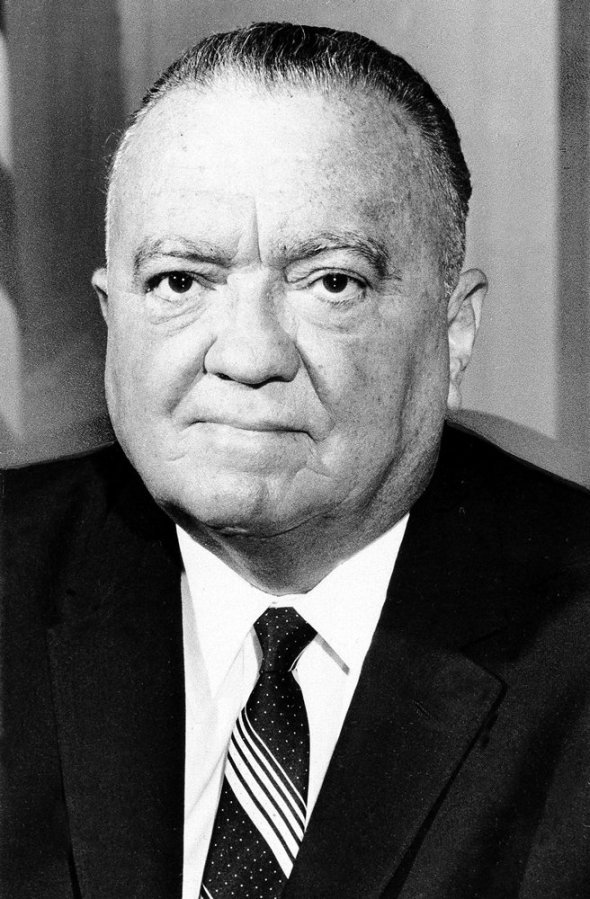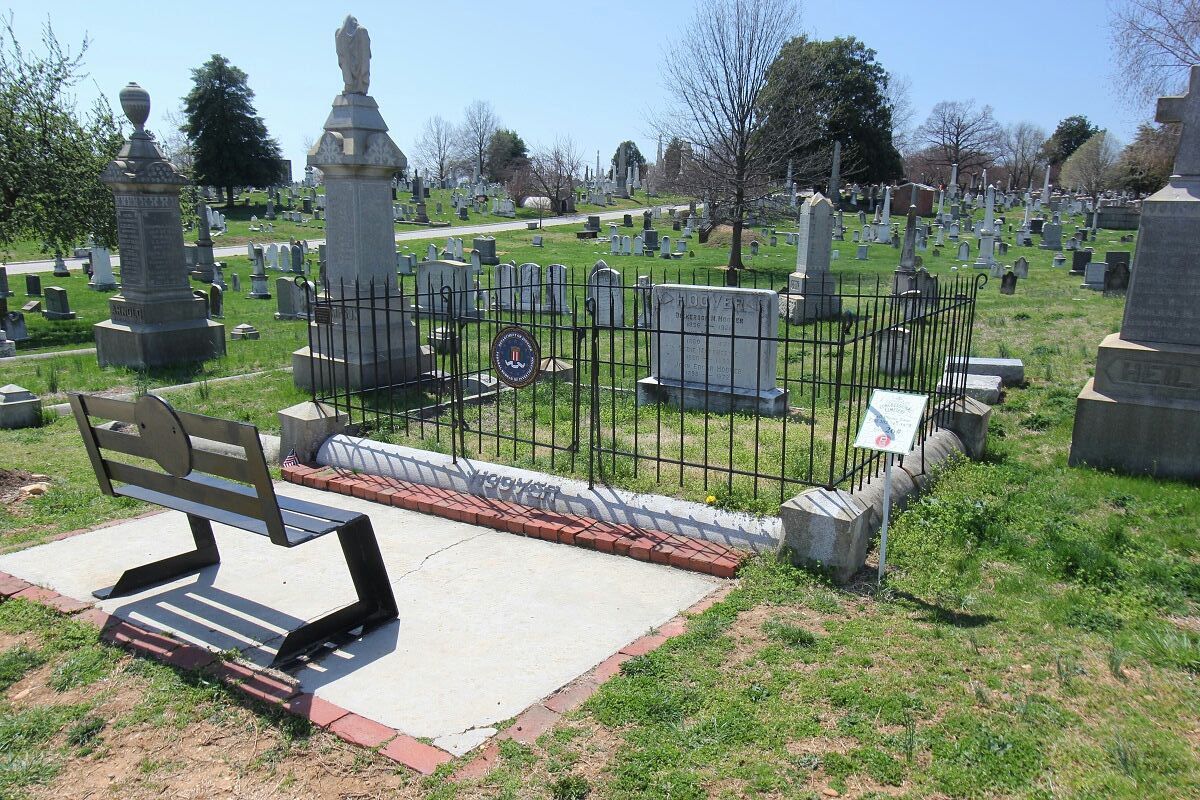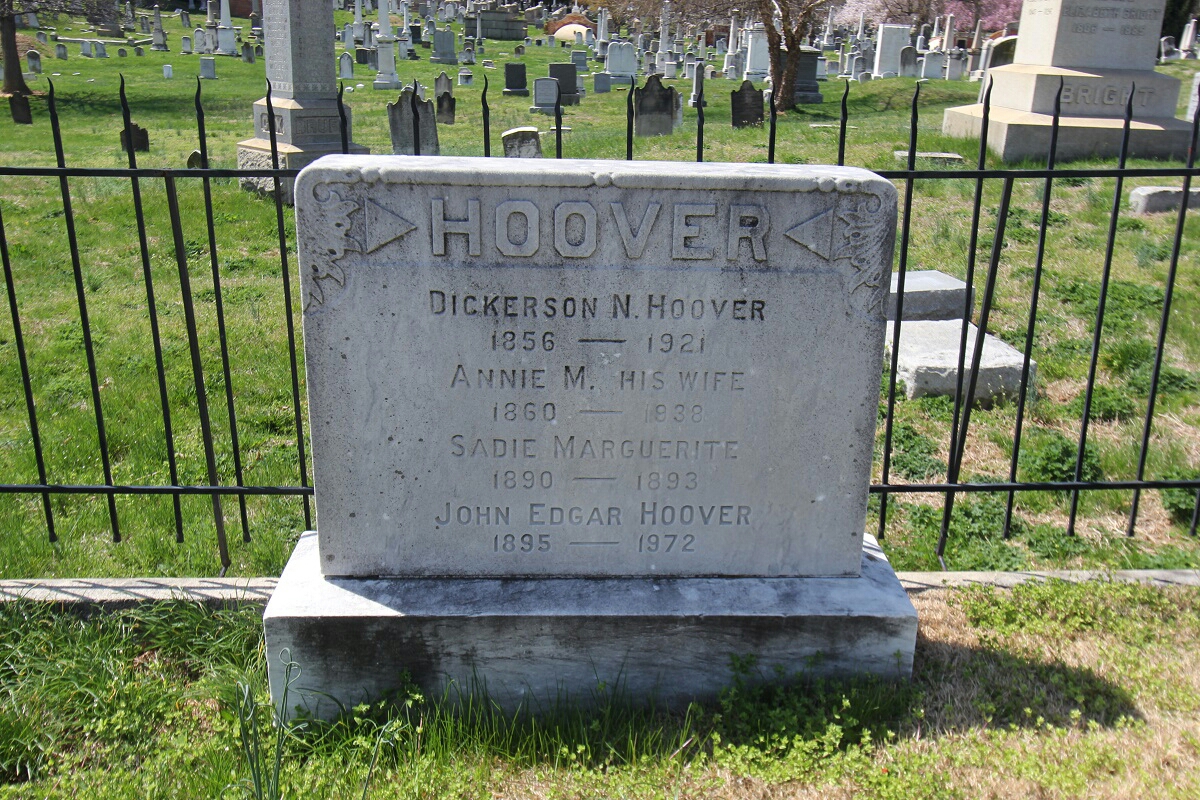American law figure. J. Edgar Hoover served as the first director of the United States Federal Bureau of Investigation (FBI) for over forty-eight years until his death in 1972. Born in Washington, D.C. three blocks behind the Capitol in the Seward Square neighborhood, his family had been civil servants for generations and his father served in this capacity with the Coast Guard. He was baptized a Presbyterian at age thirteen and became a devout member, even considering the ministry as a career. While attending Central High School, he overcame a stuttering problem by becoming a member of the debating team. Excelling in math, physics, Latin, and French, he was a member of the track team that won four national championships, but his main interest was the cadet corps. He was close to his mother and lived with her until her death in the family home in the Seward Square neighborhood. Now 49 years of age, he moved and acquired his own residence. While employed at the Library of Congress, he took night school courses at George Washington University, which culminated in a law degree. During World War I, he was granted a draft-exempt status with the Department of Justice. At age 29 in 1924, Hoover became the first director of the FBI. He took an organization that was considered corrupt, inefficient, and dysfunctional and built it into an effective police force. He oversaw the application of science to police work and promoted the creation of police training facilities and established the National Crime Information Center. He boosted a centralized fingerprint cataloging system with state-of-the-art crime laboratories. In the 1930s, Hoover's agents rounded up notorious gangsters such as John Dillinger, Machine Gun Kelly, Pretty Boy Floyd, Baby Face Nelson, and Ma Barker. Aided by the creation of Hoover's Ten Most Wanted List, the American public became involved. The Bureau was kept busy during World War II, arresting German and Japanese saboteurs and secret agents, then switching in the postwar to communist agents and plots. During the civil rights movement in the 1960s, the FBI worked on disrupting and then destroying the network of Klansman who perpetuated racial terrorism. J. Edgar Hoover successfully avoided independent investigations of both his and the FBI's conduct during his tenure while enjoying virtually unchecked public power. He maintained secret files on individuals and organizations from presidents, movie stars, and even First Lady Bess Truman with information that was illegally obtained by wiretaps, searches, and seizures. He frequently used this information to destroy or manipulate his enemies or detractors. When he died at age 77 in 1972, President Richard M. Nixon ordered a full state funeral. Hoover's remains were taken to the Capitol's rotunda where he lay in state and then to the National Presbyterian Church where some two thousand mourners, including President Nixon, First Lady Pat Nixon, and Mamie Eisenhower attended his funeral service. A national audience watched on television. His body was enclosed in a lead-lined coffin weighing over a thousand pounds, which was used to discourage grave desecration, and he was buried in the family plot beside his parents at Congressional Cemetery not far from the house of his birth. The imposing national headquarters at 935 Pennsylvania Avenue East Street NW was named The J. Edgar Hoover Building in 1974. The official collection of memorabilia from Hoover's home and office is preserved in the J. Edgar Hoover Law Enforcement Museum located in the Masonic House of the Temple in Washington, DC. The museum is maintained by the J. Edgar Hoover Foundation and Society while also offering grants and scholarships in Hoover's memory to deserving men and women in the field of law enforcement.
American law figure. J. Edgar Hoover served as the first director of the United States Federal Bureau of Investigation (FBI) for over forty-eight years until his death in 1972. Born in Washington, D.C. three blocks behind the Capitol in the Seward Square neighborhood, his family had been civil servants for generations and his father served in this capacity with the Coast Guard. He was baptized a Presbyterian at age thirteen and became a devout member, even considering the ministry as a career. While attending Central High School, he overcame a stuttering problem by becoming a member of the debating team. Excelling in math, physics, Latin, and French, he was a member of the track team that won four national championships, but his main interest was the cadet corps. He was close to his mother and lived with her until her death in the family home in the Seward Square neighborhood. Now 49 years of age, he moved and acquired his own residence. While employed at the Library of Congress, he took night school courses at George Washington University, which culminated in a law degree. During World War I, he was granted a draft-exempt status with the Department of Justice. At age 29 in 1924, Hoover became the first director of the FBI. He took an organization that was considered corrupt, inefficient, and dysfunctional and built it into an effective police force. He oversaw the application of science to police work and promoted the creation of police training facilities and established the National Crime Information Center. He boosted a centralized fingerprint cataloging system with state-of-the-art crime laboratories. In the 1930s, Hoover's agents rounded up notorious gangsters such as John Dillinger, Machine Gun Kelly, Pretty Boy Floyd, Baby Face Nelson, and Ma Barker. Aided by the creation of Hoover's Ten Most Wanted List, the American public became involved. The Bureau was kept busy during World War II, arresting German and Japanese saboteurs and secret agents, then switching in the postwar to communist agents and plots. During the civil rights movement in the 1960s, the FBI worked on disrupting and then destroying the network of Klansman who perpetuated racial terrorism. J. Edgar Hoover successfully avoided independent investigations of both his and the FBI's conduct during his tenure while enjoying virtually unchecked public power. He maintained secret files on individuals and organizations from presidents, movie stars, and even First Lady Bess Truman with information that was illegally obtained by wiretaps, searches, and seizures. He frequently used this information to destroy or manipulate his enemies or detractors. When he died at age 77 in 1972, President Richard M. Nixon ordered a full state funeral. Hoover's remains were taken to the Capitol's rotunda where he lay in state and then to the National Presbyterian Church where some two thousand mourners, including President Nixon, First Lady Pat Nixon, and Mamie Eisenhower attended his funeral service. A national audience watched on television. His body was enclosed in a lead-lined coffin weighing over a thousand pounds, which was used to discourage grave desecration, and he was buried in the family plot beside his parents at Congressional Cemetery not far from the house of his birth. The imposing national headquarters at 935 Pennsylvania Avenue East Street NW was named The J. Edgar Hoover Building in 1974. The official collection of memorabilia from Hoover's home and office is preserved in the J. Edgar Hoover Law Enforcement Museum located in the Masonic House of the Temple in Washington, DC. The museum is maintained by the J. Edgar Hoover Foundation and Society while also offering grants and scholarships in Hoover's memory to deserving men and women in the field of law enforcement.
Bio by: Donald Greyfield
Inscription
JOHN EDGAR HOOVER
Family Members
Advertisement
See more Hoover memorials in:
Explore more
Sponsored by Ancestry
Advertisement









